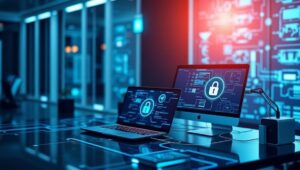IAM for a Remote and Hybrid Workforce (2025 Strategies)
As we move further into 2024 and look toward 2025, the landscape of work continues to evolve, with remote and hybrid models becoming increasingly prevalent. This shift necessitates a re-evaluation of Identity and Access Management (IAM) strategies to ensure robust security, seamless user experience, and compliance with evolving regulations. This post will explore key IAM strategies for managing a remote and hybrid workforce in 2025.
Understanding the Evolving IAM Landscape
The traditional perimeter-based security model is no longer sufficient in a world where employees access resources from various locations and devices. IAM must adapt to this new reality by focusing on:
- Zero Trust Architecture: Verifying every user and device before granting access, regardless of location.
- Context-Aware Authentication: Using contextual factors like location, device, and time of day to assess risk and adjust authentication requirements.
- Adaptive Authentication: Dynamically adjusting authentication methods based on user behavior and risk profiles.
Key IAM Strategies for 2025
- Implement Multi-Factor Authentication (MFA) Everywhere:
MFA should be a baseline requirement for all users, regardless of their role or location. This includes not only corporate applications but also cloud services and VPN access. Consider using a variety of MFA methods, such as:
- Push Notifications: Sending a notification to a user’s mobile device for approval.
- One-Time Passcodes (OTP): Generating a unique code via an authenticator app or SMS.
- Biometrics: Using fingerprint or facial recognition for authentication.
- Embrace Passwordless Authentication:
Passwords are a major source of security breaches. Passwordless authentication methods, such as biometric logins, security keys, and magic links, offer a more secure and user-friendly alternative. These methods eliminate the need for users to remember complex passwords, reducing the risk of phishing attacks and password reuse.
- Leverage Identity Governance and Administration (IGA) Solutions:
IGA solutions provide a centralized platform for managing user identities, access rights, and entitlements. They offer features such as:
- Automated User Provisioning and Deprovisioning: Streamlining the onboarding and offboarding process, ensuring that users have the appropriate access from day one.
- Access Certification: Regularly reviewing user access rights to ensure they are still appropriate.
- Role-Based Access Control (RBAC): Assigning access rights based on user roles, simplifying access management and reducing the risk of privilege escalation.
- Implement Privileged Access Management (PAM):
PAM is crucial for securing privileged accounts, which have elevated access rights. These accounts are often targeted by attackers seeking to gain control of critical systems. PAM solutions provide features such as:
- Vaulting Credentials: Securely storing and managing privileged credentials.
- Session Monitoring: Recording and auditing privileged sessions to detect suspicious activity.
- Just-In-Time (JIT) Access: Granting privileged access only when needed and for a limited time.
- Utilize Cloud-Based IAM Solutions:
Cloud-based IAM solutions offer scalability, flexibility, and cost-effectiveness. They can integrate with various cloud services and applications, providing a unified approach to identity management. Consider using cloud-based IAM solutions for:
- Single Sign-On (SSO): Allowing users to access multiple applications with a single set of credentials.
- Identity Federation: Enabling users to access resources across different organizations.
- Multi-Cloud Identity Management: Managing identities across multiple cloud platforms.
- Focus on User Experience:
Security should not come at the expense of user experience. IAM solutions should be easy to use and integrate seamlessly with existing workflows. Consider implementing features such as:
- Self-Service Password Reset: Allowing users to reset their passwords without requiring IT assistance.
- Simplified Login Processes: Reducing the number of steps required to log in.
- Personalized User Portals: Providing users with a customized view of their applications and access rights.
- Continuously Monitor and Audit:
IAM systems should be continuously monitored and audited to detect and respond to security threats. This includes:
- Security Information and Event Management (SIEM): Collecting and analyzing security logs from various sources.
- User Behavior Analytics (UBA): Detecting anomalous user behavior that may indicate a security breach.
- Regular Security Assessments: Conducting periodic security assessments to identify vulnerabilities and weaknesses.
Preparing for the Future of IAM
Looking ahead, IAM will continue to evolve to meet the challenges of an increasingly complex and distributed IT environment. Key trends to watch include:
- Artificial Intelligence (AI) and Machine Learning (ML): AI and ML can be used to automate IAM tasks, detect anomalies, and improve security posture.
- Decentralized Identity: Decentralized identity solutions, such as blockchain-based identity, offer a more secure and privacy-preserving approach to identity management.
- The Metaverse: As the metaverse becomes more prevalent, IAM will need to adapt to manage identities and access rights in this new virtual world.
Conclusion
IAM is a critical component of a secure and productive remote and hybrid workforce. By implementing the strategies outlined in this post, organizations can ensure that their users have secure and seamless access to the resources they need, while also protecting against security threats and maintaining compliance. As we move further into 2025, it is essential to stay informed about the latest IAM trends and technologies and adapt your strategies accordingly. Identity and Access Management for a remote and hybrid workforce requires a multi-faceted approach, incorporating technology, policy, and user education. By prioritizing these elements, organizations can build a resilient and secure IAM framework that supports the evolving needs of their workforce.




